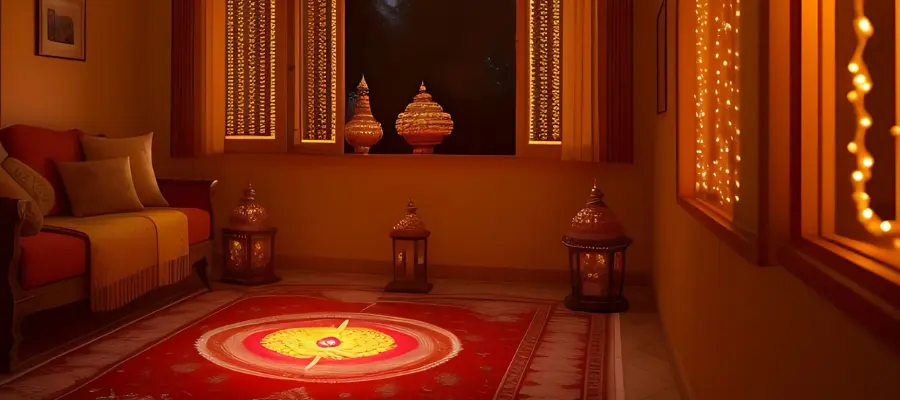Vastu is a common requirement of land owners for home design in present times. It presents a set of guidelines to be followed to ensure prosperity and happiness in homes. However, Vastu Shastra is often termed as a superstitious belief and norm that is followed blindly without any scientific basis.
Does Vastu Shastra have any scientific basis? Is it relevant in modern day design? Read on to learn more as we attempt to answer these questions.
What is Vastu Shastra?
‘Vastu’ in Sanskrit means to dwell or reside in a home or built form on a piece of land. Vastu Shastra is an ancient Indian philosophy that lists out guidelines for the design of these dwellings. It is a manual with concepts revolving around spatial organisation that lead to enhanced connections with the environment around built forms.
What are the Basic Principles of Vastu Shastra?
A set of basic principles form the core of Vastu Shastra. These principles then delve into greater depths and explanations for guiding “good home design”. These can be applied for building new structures or for modifying existing ones.
- Alignment With Cardinal Directions
According to Vastu Shastra, each cardinal direction along with the centre, is associated with one of the five elements (panchabhoota)- air, water, ether, fire and earth. Any space designed must be in alignment with these five elements to follow cosmic order.
- Proportion and Geometry
Every physical form must follow certain principles of proportions and geometry in order to fit in well with the natural environment around it and maintain a balance between people and their surroundings.
- Attaining Moksha or Salvation
It is believed that following Vastu Shastra ensures the flow of positive energy by aligning it with natural forces and thus makes homes peaceful havens. A popular belief is also that abiding by Vastu Shastra can help attain moksha or salvation.
Scientific Basis for Vastu Shastra
Although labelled as superstitious and outdated, Vastu Shastra consists of many principles rooted in scientific facts. These principles were based on scientific observations made thousands of years ago, but can be verified even in the current day.
- Solar Pathway and Wind Directions
Vastu Shastra presents design guidelines for homes based on the path followed by the Earth around the Sun. Optimum natural sunlight in homes ensures thermal comfort and regulates circadian rhythms of sleep cycles, to assure overall well-being. Wind direction in India is from the Southwest to Northeast in hotter months and vice versa in cooler months. Positioning of rooms and windows, building orientation and basic directionality in Vastu promote conditions for receiving optimal sunlight and ventilation. For example, bedrooms placed in the Southwest, as directed by Vastu, receive abundant cool air in summer with lower exposure to the Sun.
- Magnetic Poles
Similar to the Earth’s magnetic poles (North Pole and South Pole), the human body also has magnetic poles. The head is considered to be the North Pole as it is the heaviest part of the body, while the feet form the South Pole. Muscular actions are triggered by electric impulses in the nervous system, forming an electromagnetic field around the human body. Vastu Shastra provides guidelines that take these factors into consideration. For example, it states that sleeping with the head facing North would negatively affect blood circulation in the head, since the Earth’s North Pole and the body’s North would repel each other, similar to a magnet’s action.
- Energy Fields
Every particle in the universe is made up of energy, which can either be positive or negative. According to thermodynamics, this energy can neither be created nor destroyed and thus, the energy in a space like a home depends on the interaction between its enclosed particles. Vastu Shastra also suggests the existence of two types of positive energy—Jaivik (life force) and Pranik (energy of natural elements)—and provides guidelines to optimise their interaction with each other. For example, it states that the main entrance of a home is best suited to face the North-East direction, to allow the first rays of morning sunlight into the house, creating positive energy.

Common Myths about Vastu Shastra
Considering that Vastu Shastra has been around for thousands of years, it is natural that a lot of myths and misconceptions have developed around it over the years. Some of them are explained here.
- Vastu Shastra is a Rulebook
It is important to understand that Vastu Shastra does not lay down any specific rules, but just provides guidelines for design.
- Vastu Shastra is a Religious Belief Meant only for Hindus and Indians
It is not a religious text, but a manuscript which can be followed by everyone and everywhere. However, Vastu principles are specific to different regions to ensure alignment with different environmental conditions.
- Following Vastu Shastra can Solve Life Problems
Vastu Shastra principles are only meant for harmony with nature and energy flows, but cannot guarantee solutions to any other problems in life.
- Vastu Shastra is Illogical
As explained in the previous section, Vastu Shastra is based on scientific phenomena to ensure coexistence with natural elements.
- Expertise is Required to Understand Vastu Shastra
Vastu Shastra does not consist of complicated subjects and requires no special expertise to comprehend.
Limitations of Vastu Shastra for Home Design
Although rooted in scientific facts, Vastu Shastra has certain limitations which may make it difficult to be followed for modern home design.
- Space Constraints
Vastu was mainly meant for landscapes with larger plots and following its principles in tight urban plots may be difficult. For example North side windows are recommended by Vastu for optimum sunlight. However, this may not be possible in cases where the North side is abutting neighbourhood properties, meaning that providing Northern windows would not allow any light in the home.
- “Vastu Experts”
Multiple self-proclaimed “Vastu experts” are in practice nowadays, promoting different Vastu guidelines that may not even be a part of the original manuscript. They target vulnerable and fear-driven people for monetary gains.
- Plot Sizes and Shapes
Vastu Shastra generally recommends avoiding irregular shapes. However this may be difficult to follow when the plot shape itself is irregular, which is a common trait of new urban plots. Smaller plot sizes also mean that following Vastu principles may not ensure the best conditions for ventilation and natural light.
- Practicality
Following Vastu principles for modern home design may not always be practical and may mean additional monetary expenditure. For example, Vastu recommends borewell locations in the North, Northeast or East. However, groundwater availability in the site may actually be elsewhere.
To What Extent Should Vastu Shastra Be Followed in Modern Home Design?
The principles of Vastu Shastra can be followed as long as individual requirements are met and the underlying integrity of the design is maintained. It is not recommendable that functionality and basic necessities of abundant natural light and ventilation be compromised just to abide by these principles. Although rooted in scientific knowledge, modern home designs may not be able to achieve 100% Vastu compliance due to the simple reason of practicality. In the end, individual beliefs and prioritisation become the vital aspect for prospective homeowners to make a choice between compromising certain aspects of Vastu and achieving good design.
Brick & Bolt is a pioneering tech-enabled construction company with 4500+ completed projects. We provide end-to-end construction services with options of 100% Vastu-compliant designs that can be customised to suit your tailored needs. Contact Brick & Bolt and begin building your dream home today!

